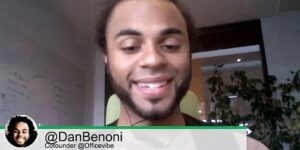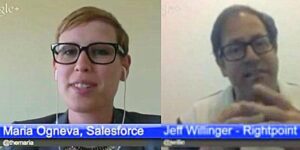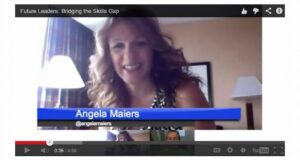
Should Work Be Fun? Really? #TChat Preview
Does “fun” fit into your vision of the ideal workplace? Are game-based models really effective at driving employee engagement? Let’s talk about it with several business culture innovators

Does “fun” fit into your vision of the ideal workplace? Are game-based models really effective at driving employee engagement? Let’s talk about it with several business culture innovators

Age discrimination has no place at work — and yet it persists. Why? What should we do? The TalentCulture community speaks…

Do you want to lead others? Start by leaving behind age stereotypes that keep us all from getting ahead. Try these 5 steps

How are employers pushing the “gamification” envelope to improve hiring and management decisions? See highlights and collected resources from a week of playful #TChat events

Competition in the workplace is unavoidable. How do you make the most of it, without letting it get the best of you?

Negative performance feedback is tricky to give and receive — but hiding the message doesn’t help. Try these 5 ideas for a more satisfying outcome

Are new technologies emerging so rapidly that organizations can’t keep pace? What’s ahead in HR innovation and how should we prepare?

Why is social learning suddenly such a hot business issue? Consider three fundamental facts…

It may seem like a fine line between #TChat events and controlled chaos, but there’s more here than meets the eye. Our community considers the why and how of crowdsourcing

In today’s connected world of work, how can we make the most of tools and techniques that help us curate and share collective wisdom?

Ask a community like ours a question, and stand back. You’re guaranteed to get answers you never expected. A lesson in the beauty of crowdsourcing…

With all the expert advice, tools and “thought leaders” available to us these days, who and what is making the biggest difference in your life? Let’s learn from one another!

Twitter. For recruiters, it’s now a hot spot — not only for talent acquisition, but also for professional development. Who’s leading this social learning movement?

Finding the next superstar employee can be a challenge. It can start by hiring solid interns, since they often move to full-time positions. But what traits should you look for?

How can organizations encourage collaboration? And why does it matter? The TalentCulture community opens up about open leadership…

What is an “open” leader — and why is that concept vital in the workplace? That’s our focus at #TChat forums this week, as we explore the intersection of management, learning and collaboration

Digital communities are increasingly important to business organizations. But what really makes an enterprise community effective?

How can we prepare tomorrow’s workforce to meet employer expectations? There’s unlimited potential to make an impact. It can start with any one of us, on any day. Ideas for action…

The skills gap is real. We can’t afford to wait for education or government or business to fix the problem. But there are ways to make a difference, wherever we are…

What can the World of Work do to prepare today’s students for the road ahead? This week’s #TChat conversation is all about the importance of mentoring — and why it’s never too soon to start…

Today’s educational system falls far short of the mark in developing tomorrow’s leaders. What can talent-minded professionals do to bridge the gap? Social learning advocate, Angela Maiers, knows…
By definition, learning is a social function. How can business leverage this more fully to develop talent in the world of work? This week, we dug deep to explore the possibilities…
To succeed in today’s social business world, professionals must apply learning techniques to help focus on what matters most. It starts with a skill called “engagement-performance transformation.” Let’s break it down…
What does it mean to apply emerging social tools and techniques to the process of continuous learning? And why does it matter for individual professionals and the organizations we serve? Let’s talk about it!
“Engagement performance.” What does this term mean, and why is it essential to business learning and transformation in an era of social media? Video preview with Tim McDonald and Michael Clark…